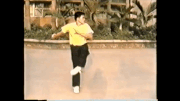Flying Crane
Sr. Grandmaster
This is an interesting video. The kung fu method shown is Tibetan Hop Ga, which is a sister art to the Tibetan White Crane that I study. They both came from the same original root method and developed in their own way while retaining some common methodologies. I think the presentation was good, considering it was very brief. What I emphasize more than what was on this video is the way the feet and legs really drive that rotation, which was not really mentioned in the video. That gives the impression that the turning is initiated from the shoulders, and the feet are kind of dragged along behind. This bleeds away power and can put bad pressure on the knees. But again, this video was very brief and there wasn’t time to properly explain it.So far, the only one comes close is this video that shows punching of different styles:
The fact that the host tried to hit the bag using the method was unreasonable. The method needs a bit of training for a while to get comfortable with the mechanics before working on the bag. But he was making a video, so I get it. Unfortunate that the guest instructor didn’t really give the bag a go, to show what can be done with it.
I have always recognized that this Tibetan method seems strange to most people. However, that leg thing that the boxing guy did seemed very strange to me. I don’t know if his presentation was accurate according to other boxing coaches, but I found it very strange.

